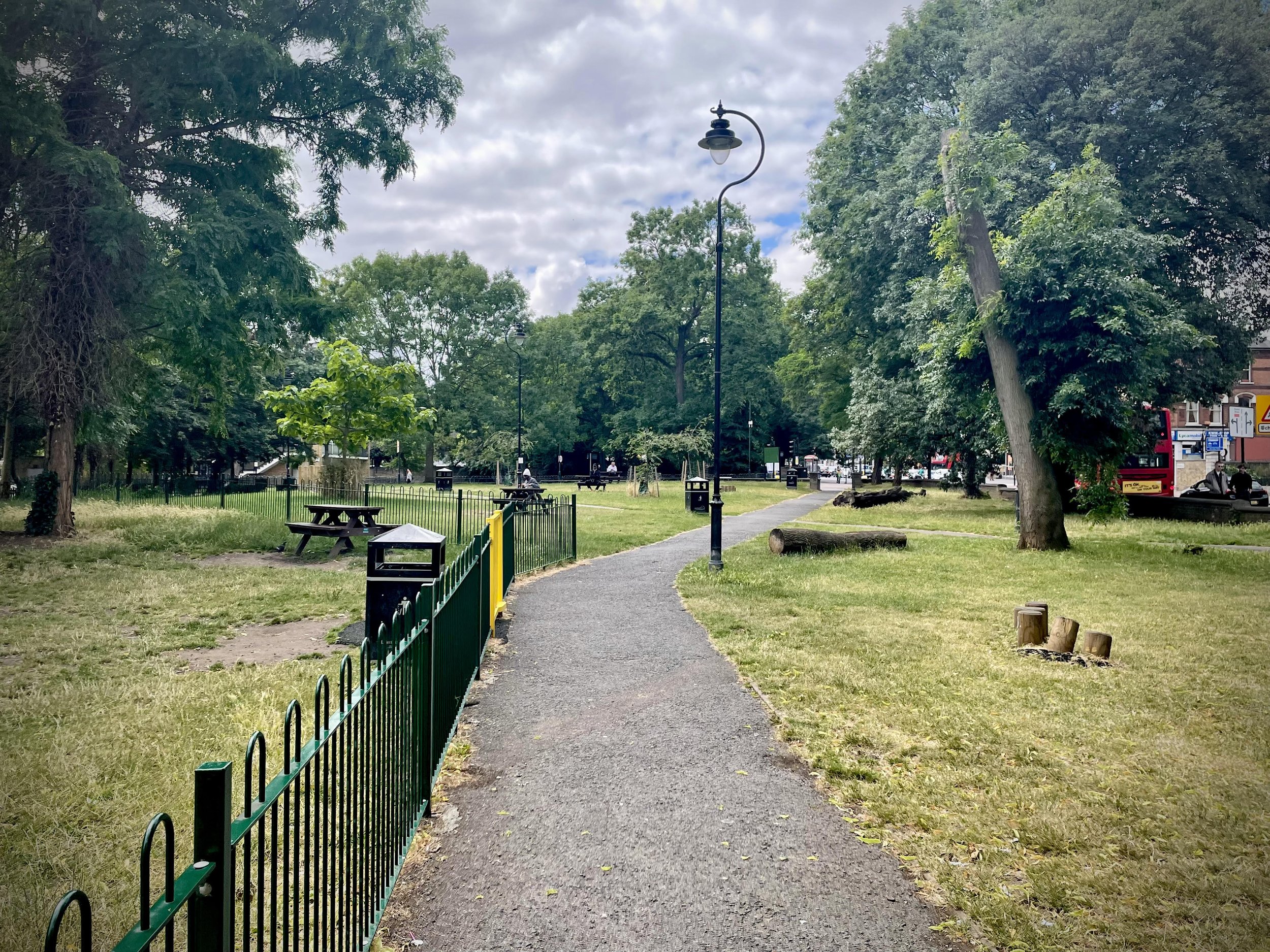The Rats of Rush Common
/By Michael Eades:
7.30am in the drizzle, waiting for a bus by the side of Rush Common in Brixton. I am watching two large rats as they bound across the wet grass and forage in the litter. It is broad daylight but they are not afraid. Their nut-brown bodies and long tails and darting movements are there for all to see as they zigzag around, bouncing from place to place, occasionally scuttling back to shelter in the hollow of an ivy-covered tree stump.
In the haze and blur of the early morning, I see people walking across the common. Trudging along, hurrying to work, they see the rats and stop briefly. The look on their faces as they react is the same every time (the same as must surely be on mine). Shock, then disgust, then resignation.
In folklore, rats are bad news. The Oxford Dictionary of Superstitions tells us that, ‘rats gnawing the hangings of a room is reckoned the forerunner of death in a family’. It tells us too that there are people in East Anglia ‘who will not say the word “rat” but will call it some other name, like Joseph. They say it is unlucky’.
When a brown rat crosses your path in the morning, in other words, it is bad luck. Little feet, sharp heads, long writhing tails slipping through the dew… It is a hex on your day to see this. Walking across a patch of municipal grass, lost in your own thoughts, it is unsettling to see that grass twitch and scurry beneath your feet. It is a sort of curse for this to happen: a bad omen, a glimpse into a dark and different world.
You never used to see rats in London. They were always there, I suppose, doing their own thing. But they stayed mostly out of sight. Over the past few years though they have become more and more visible. Ten years of austerity and council cuts, along with the litter-generating bonanza of lockdown, has brought them to the surface. They are there in the parks, rustling in the bushes. They are there on patches of wasteland at dawn and they are in the gutters and alleyways at dusk, spilling out of municipal bins. They dig underneath garden decking and tunnel beneath patches of fake plastic grass. They come up through the drains and gnaw through the floorboards of our flats, apartment blocks, housing estates.
A century ago, in The Waste Land, T.S. Eliot used the figure of the rat to conjure a sense of the slinking dread running beneath the surface of his ‘unreal’ London. ‘A rat crept softly through the vegetation’, he writes. ‘Dragging its slimy belly on the bank / While I was fishing in the dull canal / On a winter evening round behind the gashouse’.
White bodies naked on the low damp ground
And bones cast in a little low dry garret,
Rattled by the rat’s foot only, year to year.
Year after year, rattled by the claws of a rat’s foot and the swish of a tail through the undergrowth, we go about our business. In a city where you always have to tread carefully, avoiding pavement cracks and patches of spilt grease and litter disturbed by the foxes, the scurry of rats is becoming a common sight caught in the corner of your eye. A sudden movement twitches your head around with an alertness that you would rather not have, to catch a glimpse of something you would rather not see.
In a brief and fleeting moment, you stop and twitch and grimace. Your face says it all. ‘I do not want this’, says your face. ‘I didn’t think that my life would be like this. When I was young, I hoped for better things than to be walking to work on Monday morning in the rain in South London and seeing rats foraging in my local park’.
Eliot, again, whispering over your shoulder. ‘I think we are in rats’ alley / Where the dead men lost their bones.’
Back on Rush Common, you put your head down and walk on. In the rain, you keep walking, past the bins and the picnic tables and the playground and empty swings and the litter. The rats are here and so are you, and you have a bus to catch, and what can you do? The rats of Rush Common crawl and swarm towards you across the grass, invincible.
In the end, I suppose, you will stop noticing them. Or, rather, you will learn to ignore them. You will learn not to flinch, or twitch, or curse superstitiously. You will learn not to notice the tails and the darting movements and the rustling of the litter and dead leaves. You will learn to live with them.
That’s all that we have left. That’s all that there is to do. Walk on, in the sad morning, and ignore them. You just have to get used to the rats.
***
Michael Eades is a writer and researcher based in London. His work has appeared in places like Confluence, The Mechanics’ Institute Review, Londonist, The i, and Reflex Press. His writing is rooted in an interest in ritual, folklore and (urban) nature. He can be found on Twitter and Instagram at @DrMichaelEades and www.michaeleades.net.


